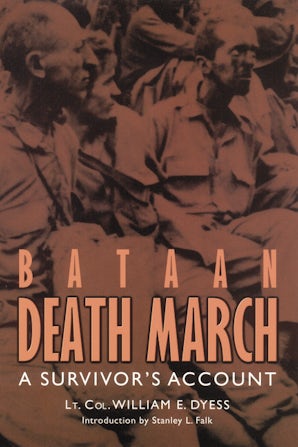
196 pages
Illus., maps
William E. Dyess was born in Albany, Texas. As a young army air forces pilot he was shipped to Manila in the spring of 1941. Shortly after his escape and return to the United States, Colonel Dyess was killed while testing a new airplane. He did not survive long enough to learn that he had been awarded a Congressional Medal of Honor.